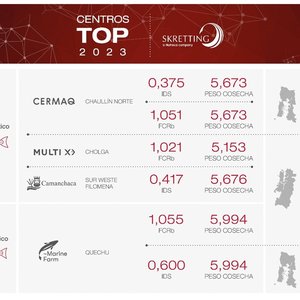Abstract
This study aimed to evaluate the effects of dietary acid and re-esterified rapeseed oils as alternatives to native vegetable oils (VO) on growth performance and feed utilization in rainbow trout. Acid oils are a free fatty acid (FFA)-rich by-product from the refining of VO and re-esterified oils are the final product of a chemical esterification process between acid oils and glycerol.
Because re-esterified oils have a high content of mono- and di-acylglycerols (MAG and DAG), known for being good emulsifiers, a higher nutritive value than that of the native and the acid oils might be expected.
A 72-day feeding trial where triplicate groups of rainbow trout were fed eight experimental diets formulated to contain 15% of a native, a re-esterified and an acid rapeseed oil, in addition to a 5% of fish oil (FO), was carried out. Diets with the native or the re-esterified oils blended with the acid oil were also studied. A commercial fish oil was used for the control diet.
Fish fed rapeseed acid and re-esterified oil diets (RA and RE, respectively) showed high fat and total fatty acid apparent digestibility coefficients (ADC) (RA: 90.5 ± 0.3%, RE: 92.5 ± 1.0% for total fat and RA: 95.7 ± 0.1%, RE: 95.8 ± 0.2% for total fatty acids). However, the lowest total fatty acid ADC was that obtained in animals fed RA, which was significantly lower (P < 0.05) than that of fish fed the rapeseed native oil diet (RN: 96.7 ± 0.1%). No significant differences in final weight were obtained between fish fed RA (375.9 ± 2.9 g) and RE (381.5 ± 11.1 g) and those fed RN (393.7 ± 6.1 g), even though both values were significantly lower (P < 0.05) than that of fish fed the control diet (411.1 ± 3.3 g). Nonetheless, fish fed diets including blends of the rapeseed acid and the re-esterified oils (RE/RA and RA/RE) had higher final weights (392.8 ± 4.4 and 394.6 ± 1.6, respectively) than those of RA and RE, although differences were not statistically significant. Furthermore, RA and RE diets did not produce relevant changes in plasma parameters or in the morphology of liver and intestine of fish.
Therefore, the inclusion of rapeseed acid and re-esterified oils along with a 5% of FO in aqua feeds does not seem to have negative effects on fat and fatty acid digestibility, growth, plasma parameter or morphology of liver and intestine in rainbow trout. However, before recommending their use, further studies regarding their effects on the final composition and quality of fillets should be carried out.
Authors: C. Trullàs, R. Fontanillas, A. Tres, A.C. Barroeta, R. Sala
Published in Aquaculture, Volume 451, 20 January 2016, Pages 186–194. Obtain the article here.







